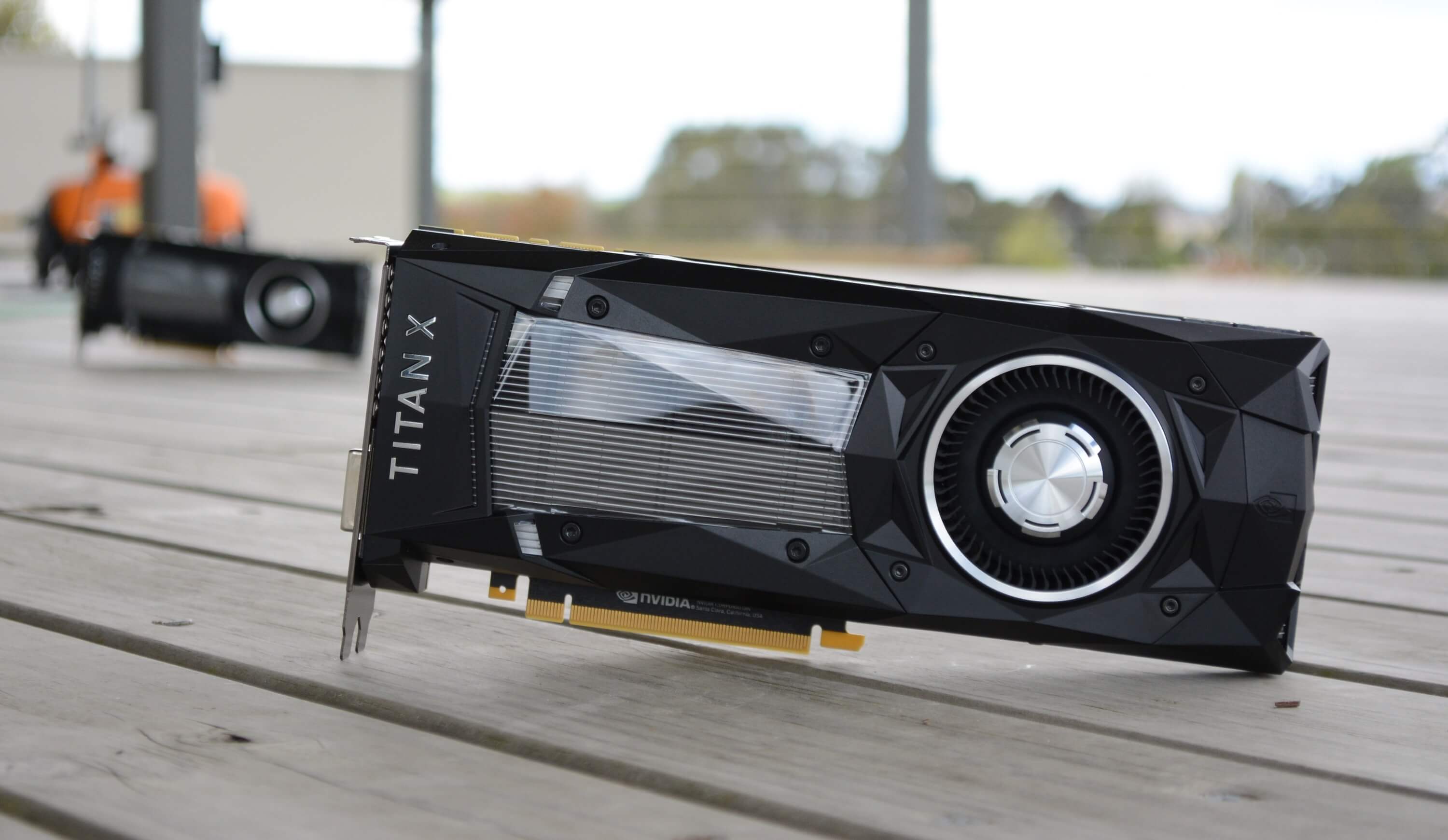Benchmarks: Mirror's Edge Catalyst, Grand Theft Auto V
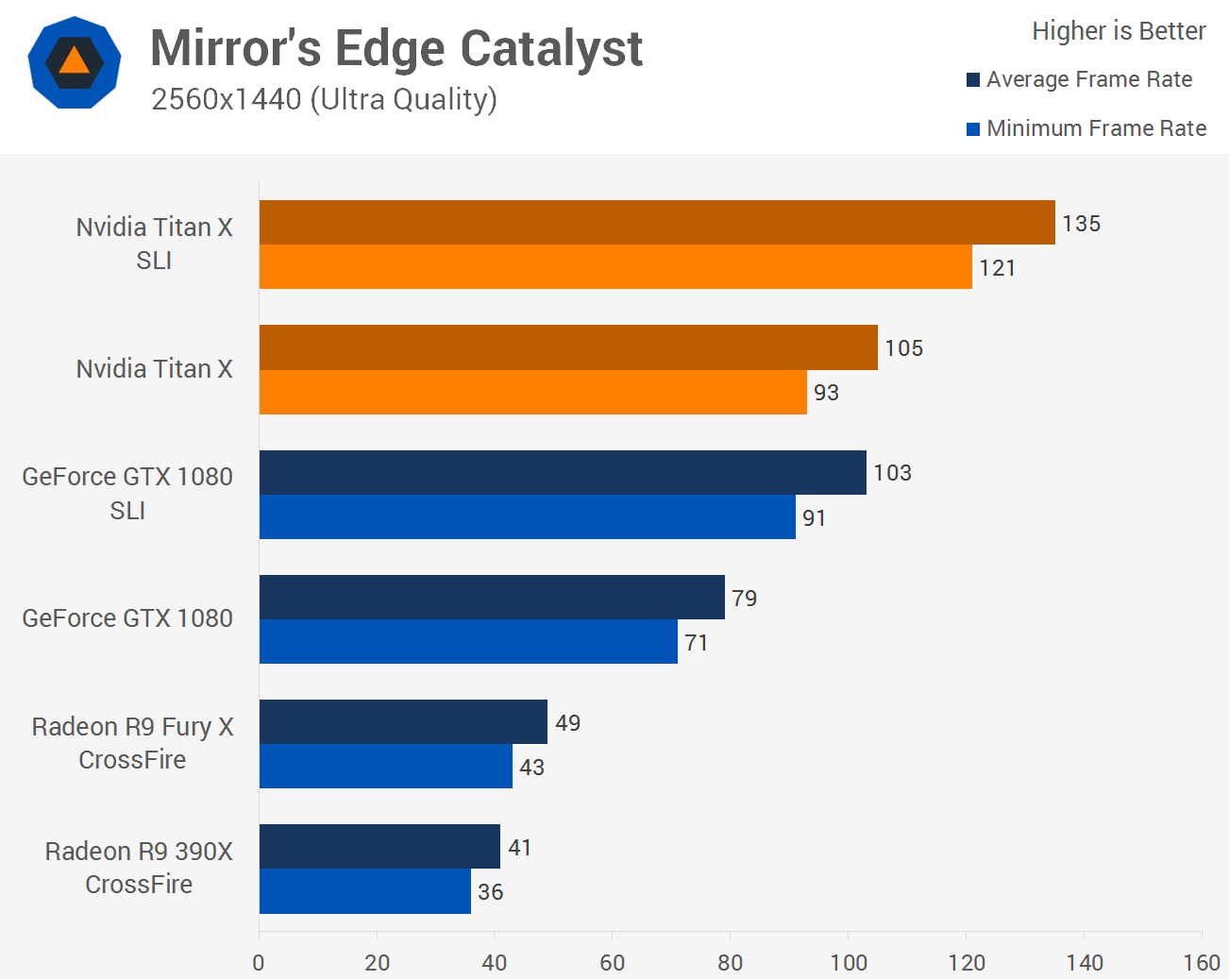
I should point out that Crossfire isn't working in Mirror's Edge Catalyst so the Fury X and R9 390X are only showing single GPU performance here. These cards have been included for comparison's sake and they're not a big deal for this article.
SLI is working though you won't exactly notice a huge difference at 1440p. Here the Titan X SLI cards were just 29% faster than a single Titan X. Still, with well over 100fps at all times, the performance was impressive nonetheless.
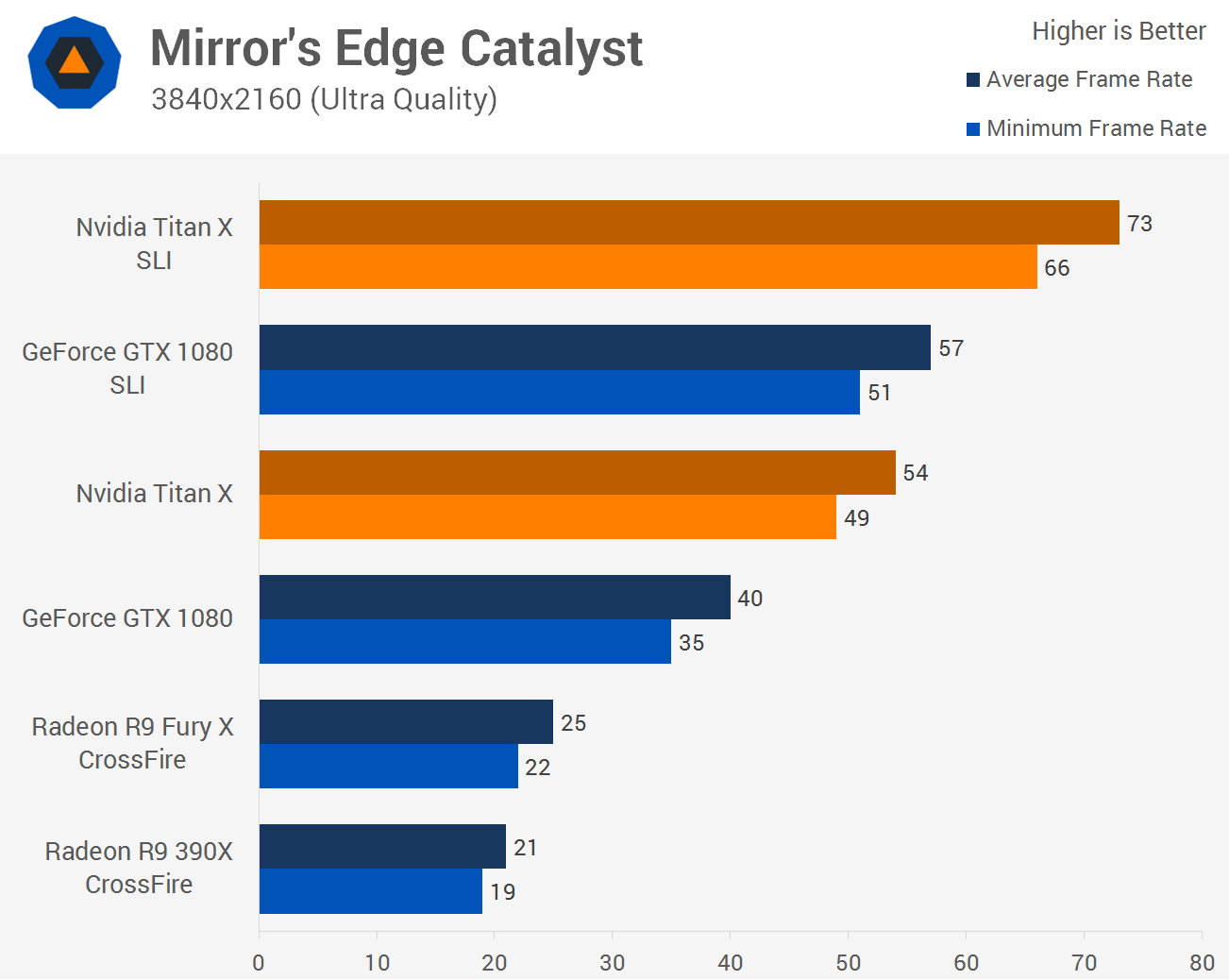
SLI scaling improves slightly at 4K, now the Titan X SLI configuration is able to deliver 35% more performance. This allowed for an average of 73fps at 4K compared to just 54fps with a single card.
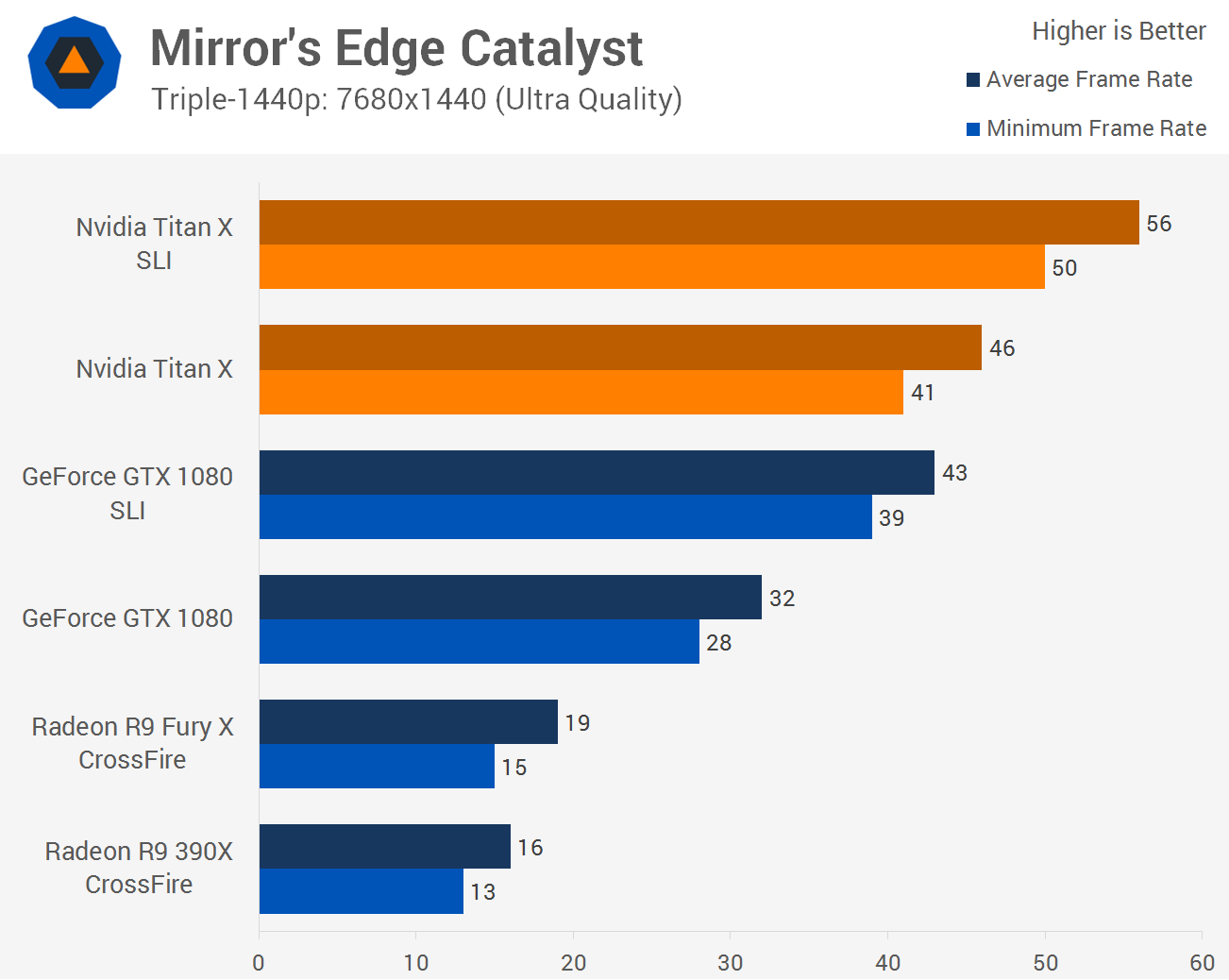
SLI scaling was reduced with the triple 1440p display setup, here adding a second Titan X boosted performance by just 22%. An average of 56fps isn't bad, but had scaling performance been around 80% we would be looking at a frame rate of just over 80fps.
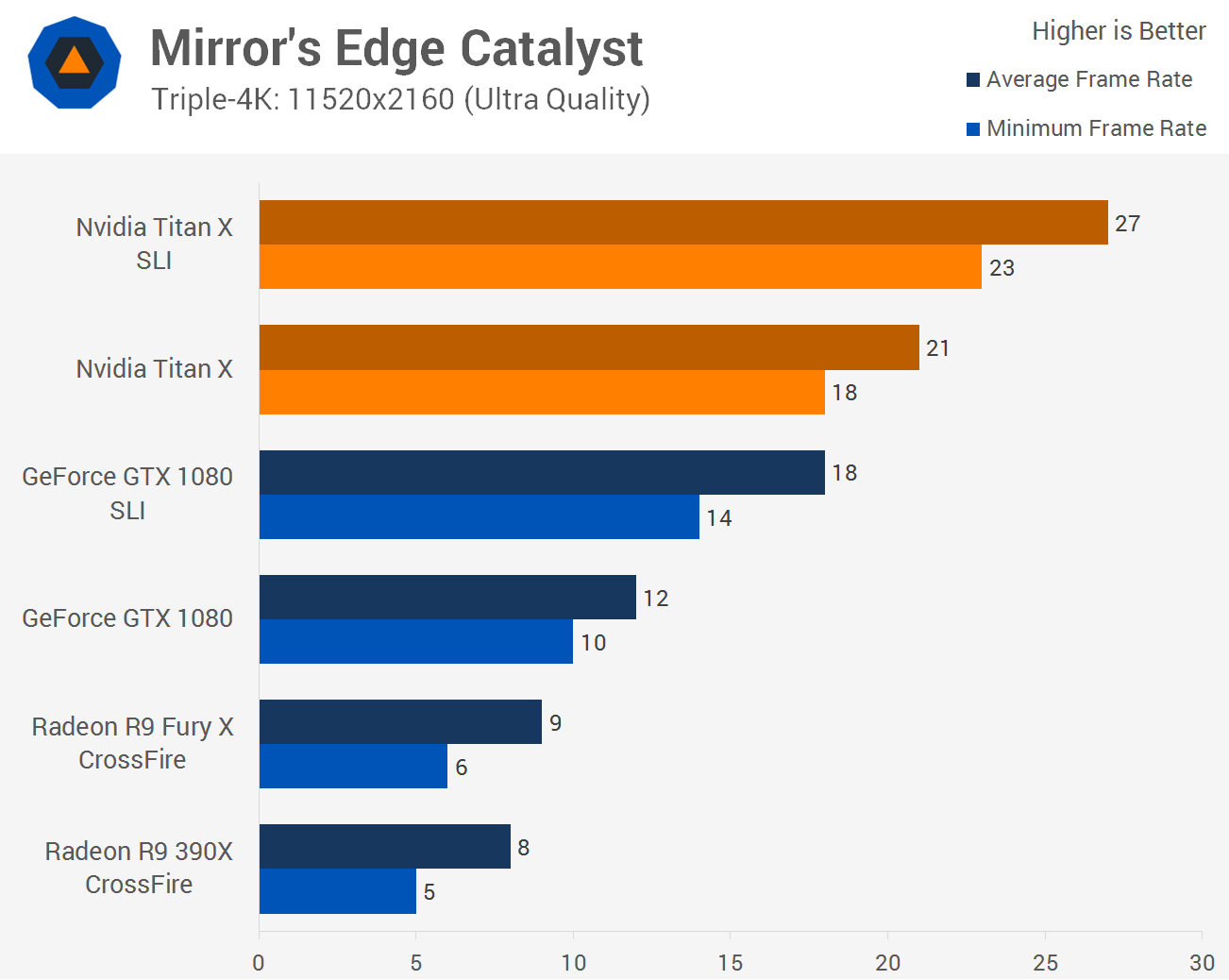
Unfortunately, due to poor SLI scaling, playable performance wasn't achieved on triple 4K displays. Instead Mirror's Edge Catalyst limited us to just 27fps on average.
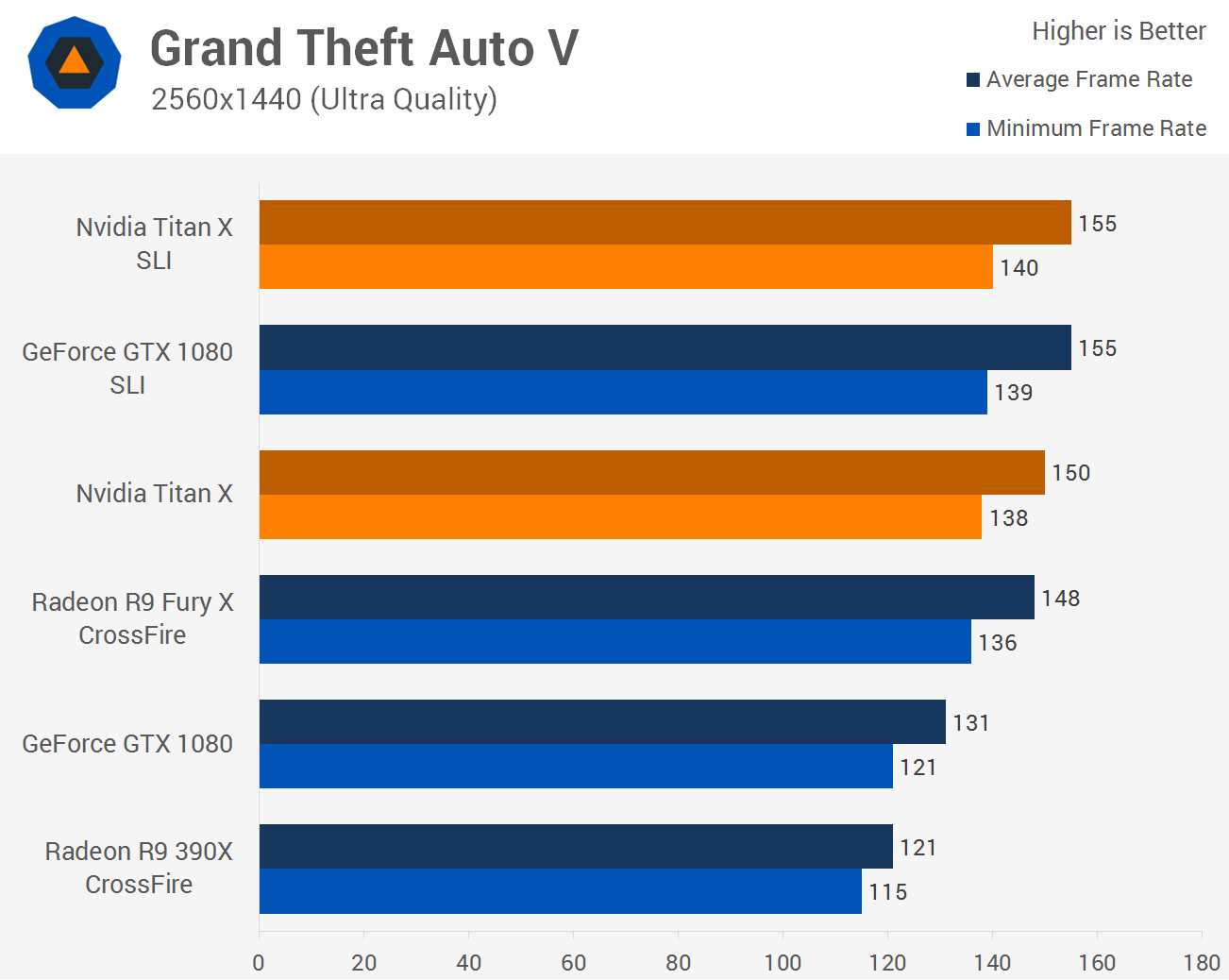
Although SLI typically scales well in GTA V, we ran into a system bottleneck at 1440p with these extreme GPU configurations, limiting the average frame rate to around 150fps.
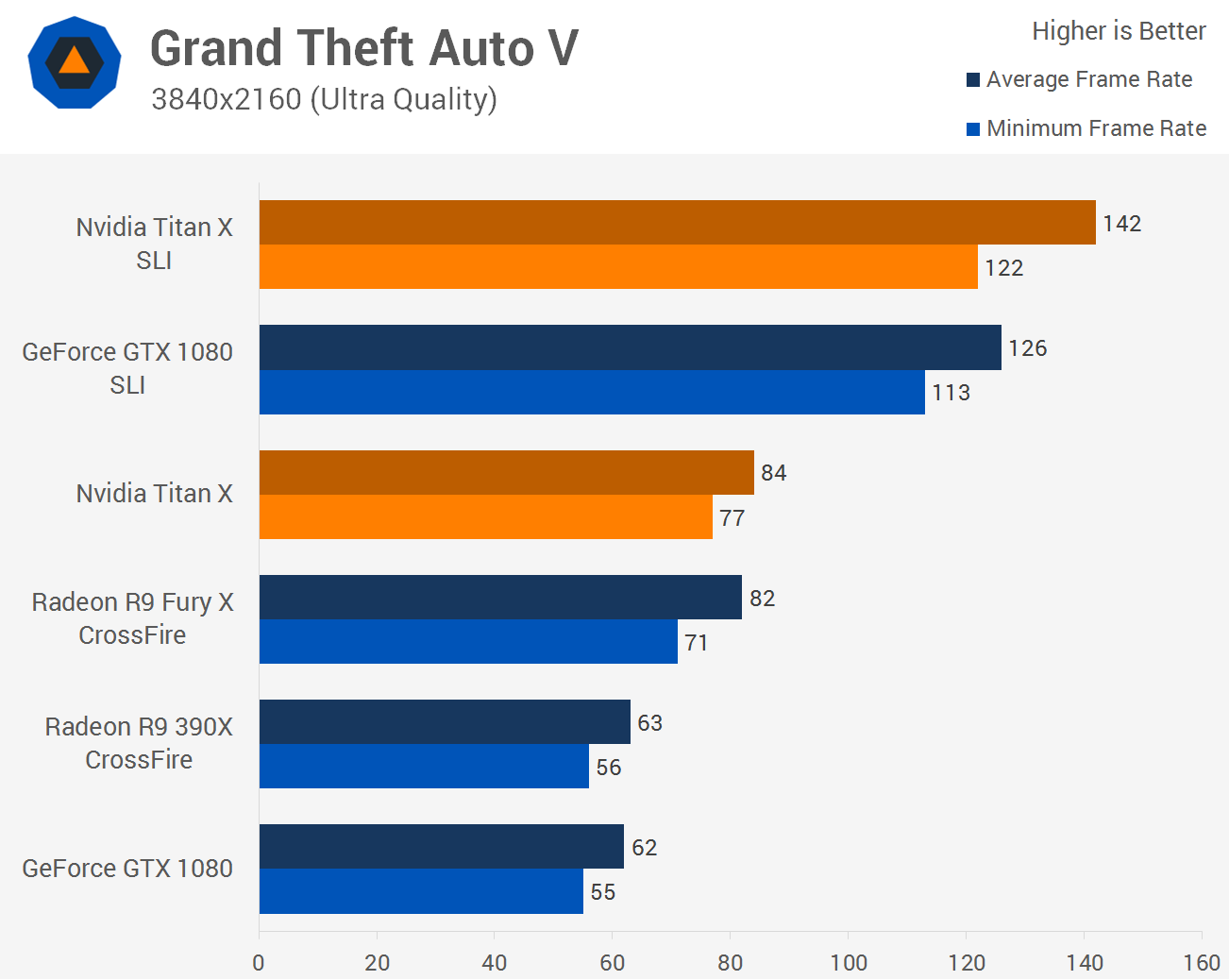
Performance doesn't drop off too significantly for the Titan X SLI cards at 4K as the average frame rate holds strong at 142fps. This was almost a 70% improvement over a single Titan X so that's not bad at all.
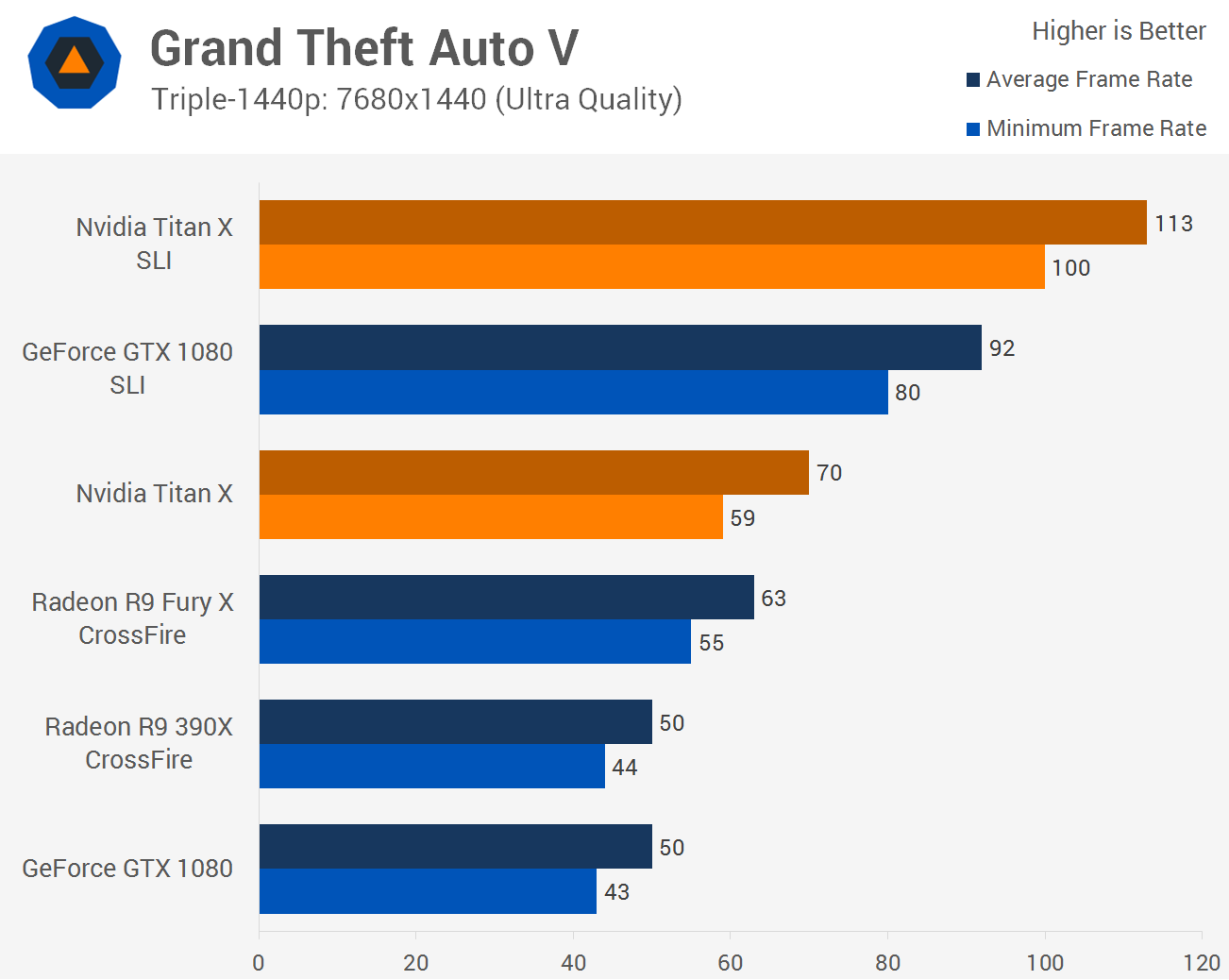
Unfortunately, SLI scaling is reduced slightly at 7680x1400 using triple 1440p monitors. We are now seeing an increase of 61%, still this was enough to keep the frame rate above 100fps for the most part so that's impressive.
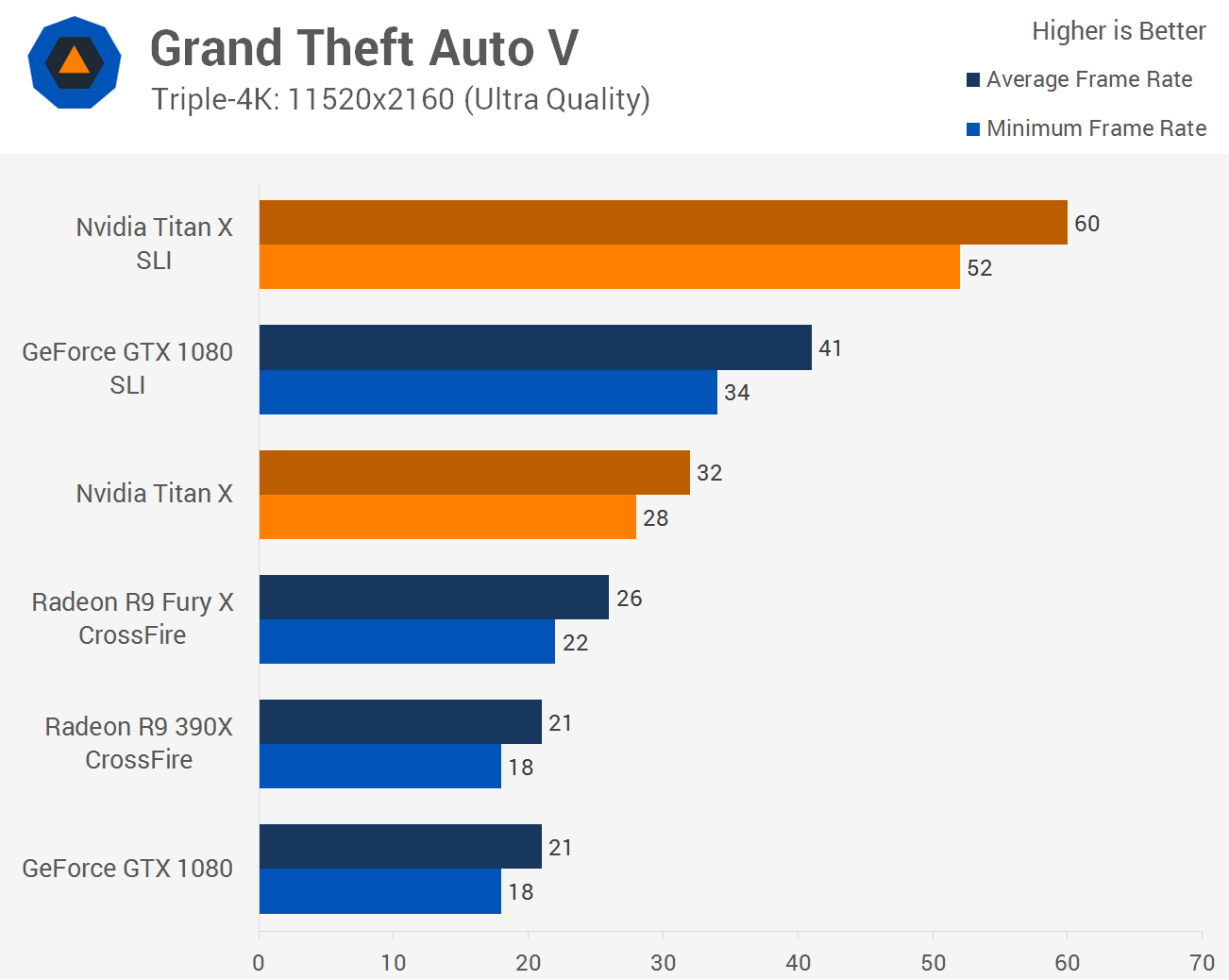
Finally, with three 4K displays in action we see a rather impressive 60fps average in GTA V when using a pair of Titan X graphics cards. This frame rate was made possible by the fact that SLI was scaling at 88% here.
